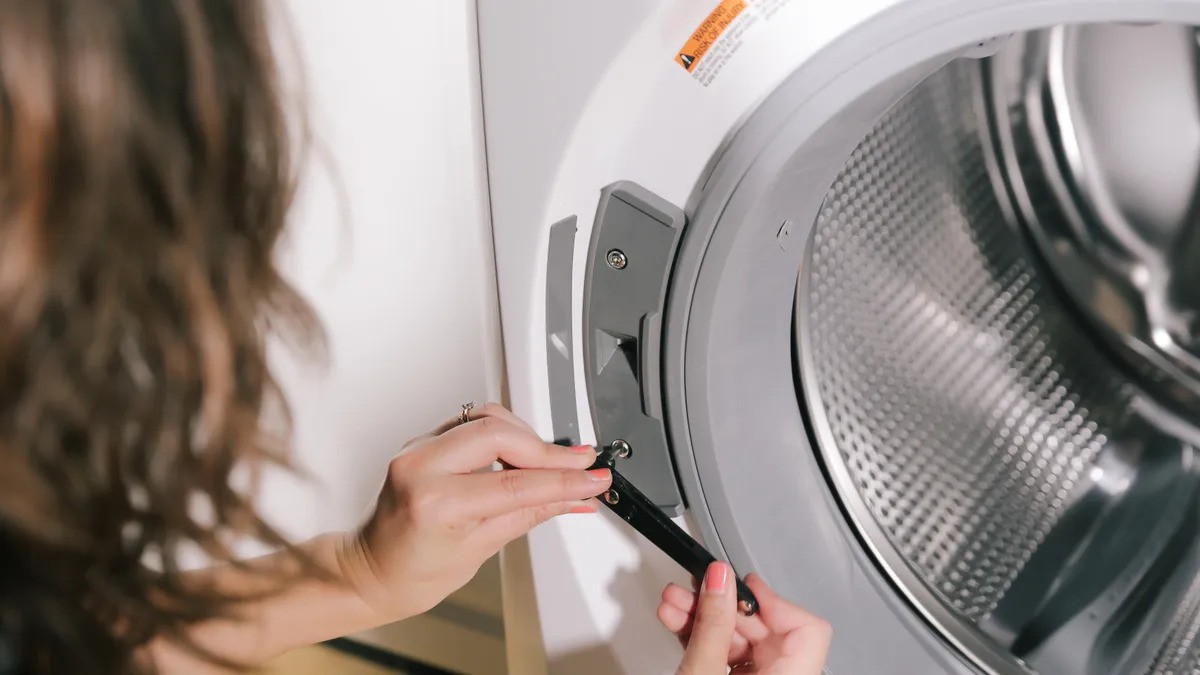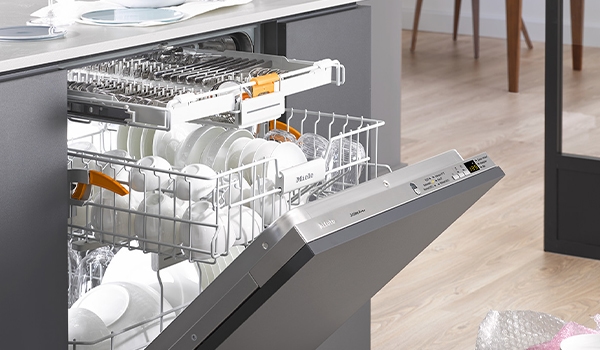How to Flip Washer Door
Switching the side of your washing machine door is a thoughtful adjustment that can greatly impact the functionality and aesthetics of your laundry space. This strategic move offers an opportunity to enhance accessibility, optimize room layout, and cater to unique spatial constraints. However, with this modification comes the need to navigate common challenges effectively. In this exploration, we delve into the advantages of door-side adjustment, providing a step-by-step guide for a seamless transition, and addressing potential hurdles along the way. Understanding both the benefits and considerations ensures a successful transformation, creating a more ergonomic and personalized laundry experience.
Optimizing Laundry Room Layout: The Impact of Switching Your Washing Machine Door
In the quest for a more functional and user-friendly laundry space, the strategic decision to switch your washing machine door to the other side can have a profound impact on the overall layout. This adjustment is not merely about aesthetics; it plays a pivotal role in enhancing accessibility and workflow efficiency.
Changing the door side allows for better utilization of available space, especially in laundry rooms with limited square footage. It enables a more ergonomic approach to loading and unloading laundry, aligning with the natural flow of movement. This optimization is particularly beneficial in compact or tight laundry room layouts, where every inch matters.
Moreover, the repositioning of the washing machine door can contribute to a more organized and streamlined appearance. This adjustment may create opportunities for improved storage solutions or the integration of additional appliances, transforming the laundry room into a more functional and aesthetically pleasing space.
As you embark on this modification journey, consider consulting your washing machine's user manual or seeking professional assistance to ensure a safe and proper transition. The impact of such a seemingly small change can be transformative, significantly elevating the efficiency and visual appeal of your laundry room.
Step-by-Step Guide: How to Safely Change the Side of Your Washing Machine Door
Introduction: The Need for Door-Side Adjustment
Switching the side of your washing machine door is a practical solution for enhancing accessibility in your laundry room. This step-by-step guide will walk you through the process, ensuring a safe and effective transition.
Materials You'll Need: Gathering the Essentials
Before starting, gather the necessary materials, including a screwdriver, pliers, and the manufacturer-provided door hinge kit. Checking your washing machine's manual for specific tools is advisable.
Safety First: Disconnecting the Power
Begin by ensuring safety. Disconnect the washing machine from the power source to prevent any electrical mishaps during the adjustment process. Safety should always be the top priority.
Locating and Removing the Hinges: A Precise Approach
Identify the existing hinges on the washing machine door and frame. Using the appropriate tools, carefully remove the screws securing the hinges, allowing you to detach the door from its original side.
Preparing the New Door Hinge Side: Aligning for Success
Position the door on the opposite side, aligning it with precision. Insert the new door hinge kit, securing it in place with the provided screws. Take your time during this step to ensure proper alignment.
Adjusting Door Latch and Lock: Ensuring a Seamless Fit
If your washing machine has a door latch or lock mechanism, make the necessary adjustments to align them with the relocated door. This step is crucial for the door to close securely and function properly.
Testing the Door: Confirming a Successful Transition
After completing the adjustments, carefully test the door to ensure smooth opening and closing. Confirm that the latch engages correctly, providing a secure seal during operation.
Reconnecting the Power: Ready for Use
Once satisfied with the door's functionality, reconnect the washing machine to the power source. Perform a trial run to ensure the machine operates correctly with the adjusted door.
Final Touches: Aesthetic and Functional Considerations
Take a moment to appreciate the transformed layout of your laundry room. Consider additional adjustments for a more organized and visually appealing space, such as rearranging storage or complementary appliances.
Conclusion: Enjoying a More Accessible Laundry Space
By following this step-by-step guide, you've successfully changed the side of your washing machine door, optimizing accessibility in your laundry room. Embrace the improved functionality and take pride in your accomplishment.
Enhancing Accessibility: The Advantages of Door-Side Adjustment in Washing Machines
In the pursuit of creating a more user-friendly and accessible laundry space, the adjustment of the washing machine door to a different side proves to be a transformative solution. This strategic modification brings forth several advantages, contributing to both convenience and functionality within the laundry room.
One primary benefit lies in improved ergonomics. By switching the door side, users can align the washing machine with their natural movements, facilitating easier loading and unloading of laundry. This adjustment is particularly valuable in compact spaces where optimizing every inch is essential.
The repositioning of the washing machine door also contributes to enhanced accessibility for individuals with mobility challenges. Placing the door on a more reachable side ensures that everyone, regardless of physical abilities, can interact with the machine comfortably and independently.
Additionally, this modification offers a creative solution for laundry room layouts with unique spatial constraints. The ability to customize the door side allows homeowners to adapt their laundry space to the specific design and flow of their room, making the most of available space and improving the overall aesthetic.
As we consider the advantages of door-side adjustment, it becomes evident that this seemingly small change holds the potential to significantly enhance the accessibility and functionality of the laundry room. It is a practical and user-centric approach that transforms the daily task of doing laundry into a more efficient and enjoyable experience for everyone in the household.
Common Challenges and Solutions: What to Consider When Switching Washing Machine Doors
When contemplating the switch of your washing machine door to the opposite side, it's essential to be aware of potential challenges and the corresponding solutions to ensure a smooth transition.
One common challenge involves the relocation of the door hinge. Depending on the washing machine model, the hinge may need adjustment or replacement. To address this, refer to the manufacturer's guidelines or consult a professional to obtain the appropriate hinge kit and instructions for your specific machine.
Ensuring a proper seal after switching the door is another consideration. In some cases, adjustments to the door latch or lock mechanism may be necessary to guarantee a secure closure. Take the time to align these components accurately, testing the door's functionality to confirm a tight and effective seal.
Alignment issues can arise during the door-side adjustment, impacting the overall aesthetics and functionality. To mitigate this, carefully measure and align the door before securing it in place. Paying meticulous attention to detail during this step helps prevent future operational problems and enhances the visual appeal of your washing machine.
Lastly, it's crucial to consider the electrical components of the washing machine. Disconnecting the power before initiating the door switch is a safety measure, but upon completion, reconnecting it correctly is equally vital. Test the machine to ensure it operates seamlessly with the adjusted door, addressing any electrical concerns promptly.
In conclusion, anticipating and addressing common challenges when switching washing machine doors is integral to a successful modification. By being proactive and thorough in your approach, you can enjoy the benefits of an optimally placed door without compromising the functionality or safety of your appliance.








